iPhone 6 Might Be Best Pocket Camera You Can Buy
Advanced autofocus and image stabilization, along with strong low-light performance, might make this the best pocket camera for the money.

Every try to take a photo of a moving subject — say your daughter or nephew —with a phone camera? Ever get a clear shot? If so, you've been very lucky. We won't know until we try it, but if the new iPhone 6 and 6 Plus iSight cameras work as promised, they could be some of the best pocket cameras you can buy. The reason: a technology known phase-detection autofocus, which Apple dubs focus pixels.
(To learn the details of focus tech, see Why Autofocus is the New Megapixel.)
Don't feel bad if you haven't heard of it. But you've probably heard of DSLRs and heard, and seen, that they focus very fast. That's thanks to phase detection autofocus. The technology has been trickling down from DSLRs to all the respectable mirrorless cameras and a smidgen of smartphones.
MORE: iPhone 6 Plus Review
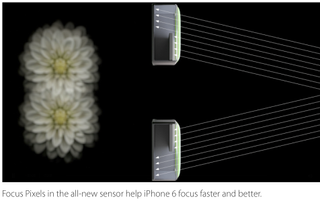
But the latter has been disappointing. We've tried phase detection on the Samsung Galaxy S5, for example, against the old-fashioned contrast detection in the iPhone 5s, and the old iPhone won. (See our camera head-to-head.) So clearly it's not just about the spec; it's about the execution. Will Apple make this focus tech work better than Samsung has? We don't know yet, but the company tends to not introduce a technology until it's thoroughly baked.
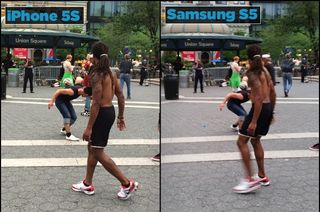
And phase-detection is almost impossible to find in pocket cameras. We loved a lot of things about the new, pocketableSony RX100 III (see review), which in many ways is as good as a DSLR. (In fact, it's been used to shoot magazine spreads.) But fast autofocus is where it falls down, because it has only contrast-detection.
Video that doesn't blur out of focus
Fast autofocus is just as big a deal for video. Anyone other than pros tends to get disappointed by video that drifts in and out of focus. That's because nearly all video cameras, even pro models and expensive DSLRs, use that old-fashioned contrast detection. One notable exception is the Canon EOS 70D DSLR (see review), which incorporates millions of phase detectors onto its image sensor. As a result, it's nearly sentient - able to track any subject you designate, wherever it goes. If the iPhone 6 and 6 Plus are even remotely as good as the 70D, they could be the best video cameras for the money.
MORE: Best Phone Cameras
Sign up to get the BEST of Tom’s Guide direct to your inbox.
Upgrade your life with a daily dose of the biggest tech news, lifestyle hacks and our curated analysis. Be the first to know about cutting-edge gadgets and the hottest deals.
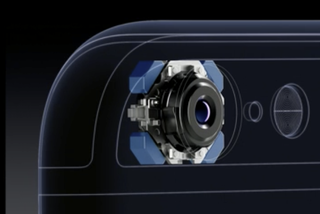
The larger iPhone 6 Plus also incorporates optical image stabilization — a technology that's almost universal in point-and-shoot cameras, but very rare in phones. Samsung has installed OIS in its new Galaxy Note 4 and Galaxy Note Edge. We haven't had a chance to test out the OIS in these cameras, but if it works well, it will make a huge difference in shooting video, which otherwise captures every jitter of your hand.
Night moves - or lack thereof
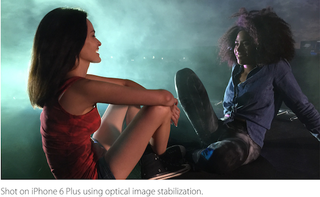
Both phase detection and OIS could make a big deal in low-light photography - everything from a candlelight dinner to simply a dim office. Contrast detection is especially poor in low light — after all, there's not much contrast if everything is dark. In dark conditions, even a fancy camera without phase detection could take several seconds to lock focus, if it does at all, meaning you completely miss a photo.
Meanwhile, optical image stabilization means that the camera can scavenge more light not by upping the ISO light sensitivity but by slowing the shutter speed to a rate such as 1/30 or even 1/15 second that would otherwise produce motion blur. This is way better than upping ISO, since the higher it goes, the higher the graininess (known as noise) goes. You've seen this in the speckled photos that you take by low light when you don't want to or can't use a flash (kid's play, for example).
MORE: How Many Megapixels Do You Need?
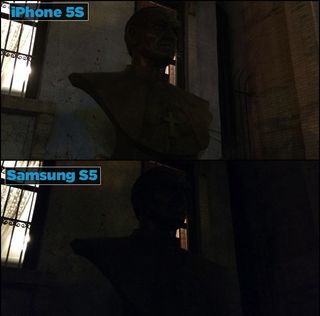
Also good for low light: Apple still hasn't upped the megapixel count for the iPhone camera, keeping it at 8MP. Why is that good? The fewer the pixels, the bigger the pixels. And bigger pixels absorb more light, without resorting to the grainy high-ISO route. In our tests, the 8MP camera in the iPhone 5s is the best low-light camera we've tried. And from our first hands-on with the iPhone 6, low-light performance seems to be at least as good. (Click the photo for a larger version.)
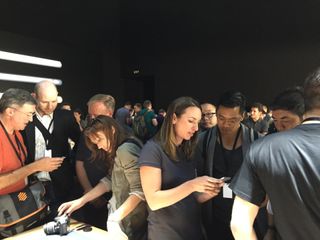
Other goodies are me-tos
The new iSight cameras have lots of other new features, though they are mostly catch-up to what Android phones have long offered. 1080p HD video has been upped from 30fps to 60fps. And high-speed mode (for playing back in slow-mo) now includes 240fps in addition to 120fps. This mostly brings the iPhone in line with the Samsung Galaxy S5. The Samsung, and some other phones, also shoot video at Ultra HD (aka 4K) resolution. But really, there aren't many places to watch that video, and it seriously hogs storage space on a phone.
Pretty much all phone cameras have HDR, to enhance the lights and darks in high-contrast scenes. The iPhone has previously done this by taking three shots at different exposure levels and combining them — something that takes time and can lead to motion-blurred photos. The new iSight camera does HDR in realtime, from a single shot — just like existing competitors such as the Galaxy S5 and the LG G3 (see camera face-off).
If the beat-beat of phone announcements from Samsung last week and Apple today demonstrate anything, it's that improvements are rapidly coming to our always-with-us cameras. And even more are likely to follow.
- DSLR vs. Mirrorless Cameras: Which is Better for You
- How to Take a Great Selfie
- Nikon 1 J4 Review: Super Small and Super Fast
Senior editor Sean Captain wants a wafer-thin phone with built-in DSLR. Follow him @seancaptainand on Flickr (sergiocapitano). Follow us @tomsguide, on Facebook and on Google+.
Sean Captain is a freelance technology and science writer, editor and photographer. At Tom's Guide, he has reviewed cameras, including most of Sony's Alpha A6000-series mirrorless cameras, as well as other photography-related content. He has also written for Fast Company, The New York Times, The Wall Street Journal, and Wired.
